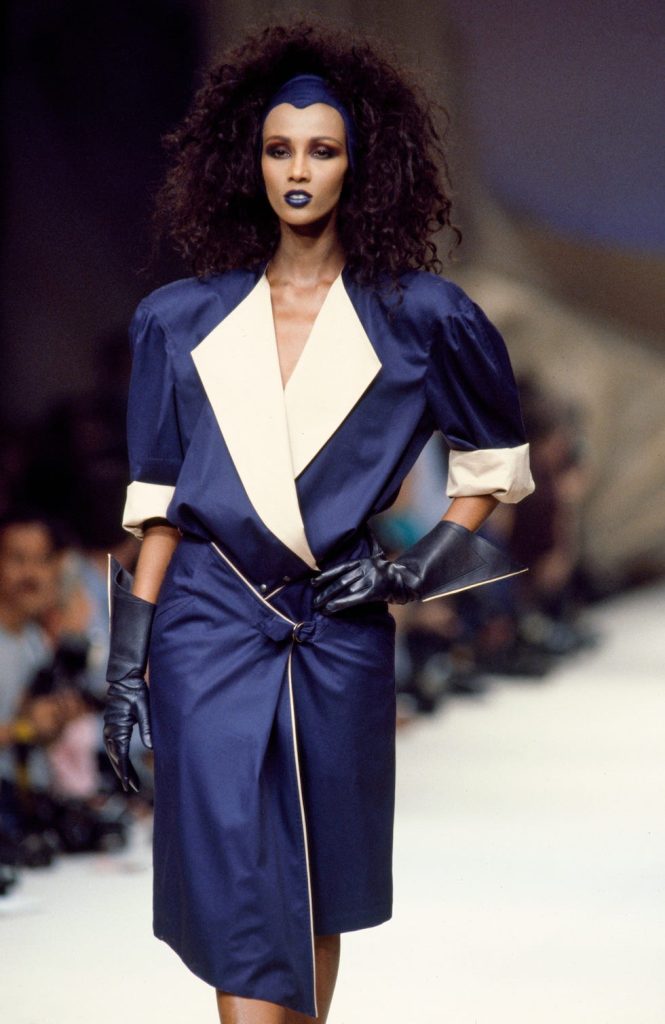By: Sahra Mohamed
In today’s world of high fashion, it’s harder to decipher if Black models and artists are being treated fairly or if including them in brands is an act of performative activism. Some brands may feature one or two diverse models but still prioritize White models. The influence of Eurocentric beauty has been ingrained in history for centuries. If we go back to ancient times, Eurocentric features were associated with classism and wealth. As European civilizations flourished, especially during the Renaissance period, features like fair skin, straight hair, and delicate facial structures became symbols of high status. The characteristics often seen in non-European populations were devalued.
The Eurocentric beauty standard was more present during the European colonial expansion, beginning in the 15th century. As Europeans colonized vast regions of Africa, Asia, and America, they imposed their cultural values and aesthetics on these territories. This led to the creation of a racial hierarchy, where White Europeans were seen as superior and non-European features were considered inferior. This contributed to the marginalization of Indigenous beauty standards and the belief that whiteness was the ideal standard.
According to an article published by the Museum of British Colonialism, historical classifications depicted women of color as less beautiful than their white counterparts, reinforcing Eurocentric beauty ideals. These standards of beauty not only affected the perception of different cultures but also became linked to social status and wealth, shaping notions of beauty that would have lasting global impacts.
In 1966, Donyale Luna was the first Black supermodel to appear on British Vogue and the first Black person to ever cover Harper’s Bazaar in 1965. This led to groundbreaking models such as Naomi Sims and Beverly Johnson who paved the way for the greats like Iman, Naomi Campbell, Tyra Banks, Billie Blair, Grace Jones, Alek Wek, and more. Despite progress in diversity and inclusion, the results of these colonial-era beauty standards continue to influence the modeling industry and the public perceptions of beauty in modern times.
When we think of today’s society and the inclusivity of not only models but working artists, some argue that brands may include them in their shows and companies but fail to pay them equally, instead using these artists as tokenism. When we look at supermodel Iman, at the height of her career, she took a stand by refusing to work for three months until fashion houses paid her what she was owed, a protest that addressed the racialized pay disparities between Black and White models. This action proves the challenges that come from being part of a marginalized community. It’s very difficult to challenge the systemic barriers in place against people of color, especially when White supremacy plays a role in the fashion realm.
In terms of colorism, lighter-skinned people of color are often given more opportunities and privileges compared to darker-skinned individuals. This is a result of the Eurocentric beauty standards promoted by White supremacy, which equates lighter skin with beauty, success, and desirability. In the modeling industry, this has meant that lighter-skinned Black, Latinx, and Asian models have often had more opportunities than their darker-skinned counterparts. The preference for lighter skin, even within communities of color, is a reflection of the racism that White supremacy has instilled over generations.
White supremacy has also shaped the economic structures of the modeling industry, with agencies and brands often favoring White models for their campaigns due to the belief that White beauty would attract a broader consumer base. This systemic preference has had economic consequences for models of color, limiting their access to high paying contracts, major runway shows, and advertising campaigns. For example, the lack of racial diversity in fashion campaigns is due to the belief that the general public (largely influenced by Eurocentric standards) would not buy or relate to products marketed by models of color. As a result, models of color often have to fight harder to be included in mainstream opportunities and are less likely to be seen as the “ideal” for high fashion brands. For more information on how capitalism and white supremacy have influenced beauty standards, you can read this article from Teen Vogue.
Despite the evidence of White supremacy in fashion, many models of color, like Iman and Naomi Campbell, have fought back against the industry’s racial bias. They have used their platforms to advocate for more inclusivity and equity. Activists within the fashion industry, such as Sarah Ziff, the founder and executive director of Model Alliance, continue to challenge the inequalities that are rooted in White supremacy and push for more equitable treatment of models of color. Their bill, The Fashion Workers Act, was finally passed in New York, and will be put into law effective in June 2025. This will protect working models within the state, including fair pay, better working conditions and safety against exploitation.
Although there has been some progress in diversifying the modeling industry, the impact of White supremacy is still felt today. There may seem to be more opportunities for models of color, but White models still dominate top spots in major fashion campaigns, and diversity is often limited to token representation. Many models spoke out against the discrimination in an article featured in Vogue back in 2020.
Brands often showcase diversity in their campaigns as a form of “performative activism” without making any real changes to the underlying structural inequities within the industry. White supremacy in the modeling industry is not just about individual prejudices but is embedded in the larger systems of representation, power, and economic access. Its impact is still seen in the ongoing fight for racial justice in fashion, which aims to break down these biases and build a more inclusive and equitable industry.

Leave a Reply